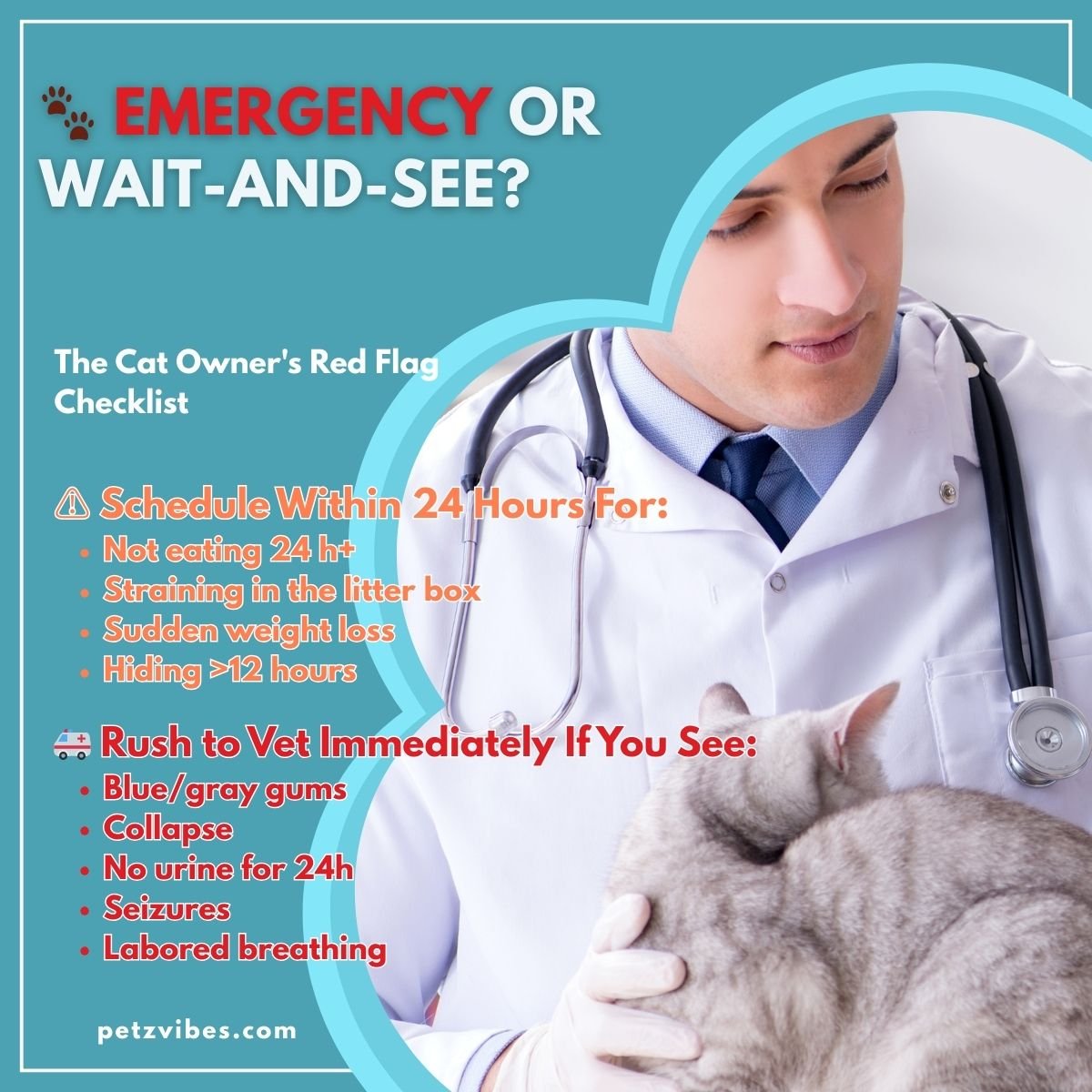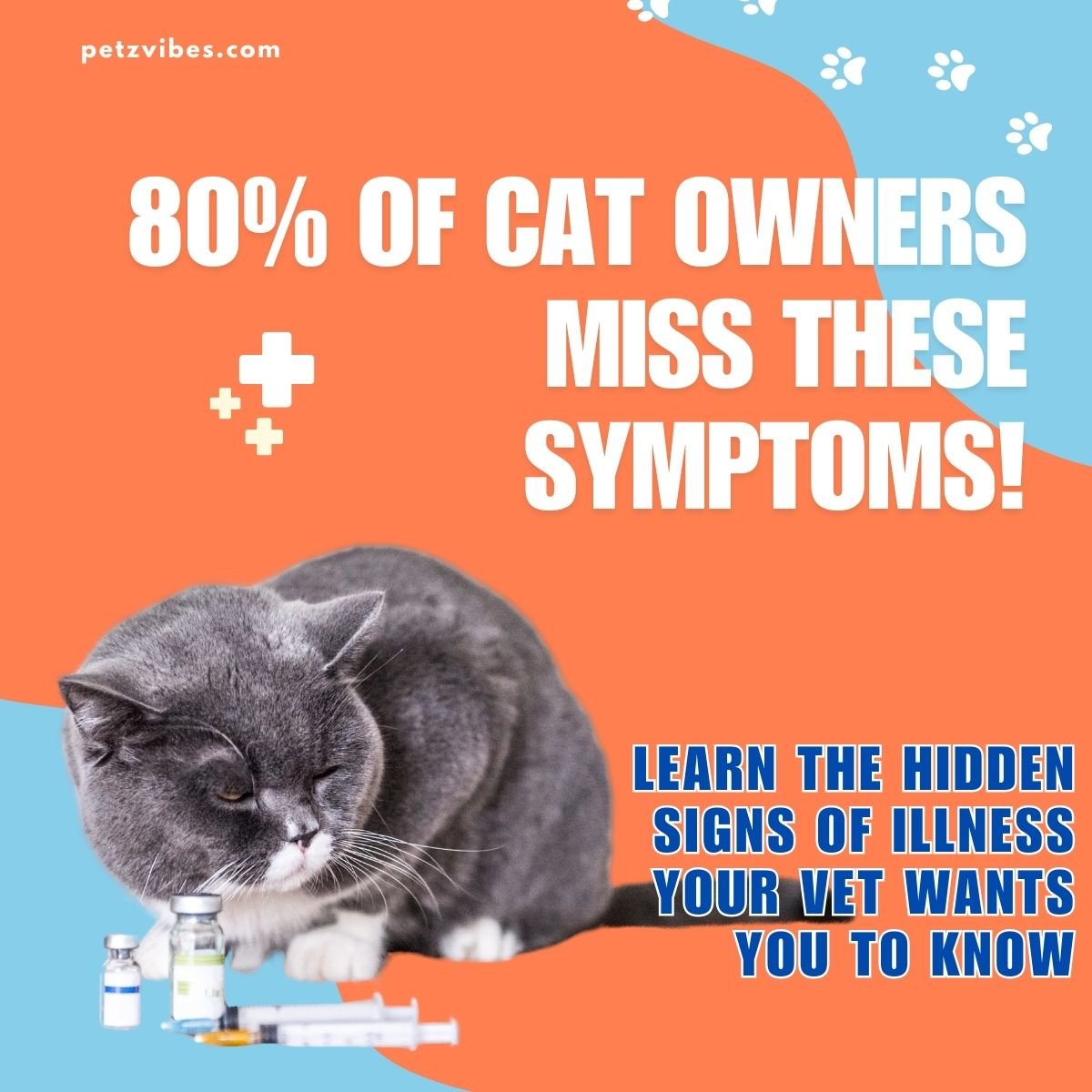Is Your Cat Trying to Tell You Something? Spotting the Hidden Signs of Illness in Cats
Your cat isn’t just a pet—they’re family. But unlike a toddler who can cry when they’re sick, cats are masters at hiding pain. In the wild, showing weakness makes them vulnerable, so even your cozy house panther might mask signs of illness in cats until they’re seriously unwell.
Could your cat be silently suffering? 🐱💔
A sudden change in litter box habits, a drop in playfulness, or even overgrooming could be red flags. And since cats can’t say, “Hey, I feel awful,” it’s up to you to decode their secret signals.
Why Recognizing Signs of Illness is Essential
Understanding and identifying signs of illness in your cat is crucial for several reasons. Firstly, early detection can often lead to more effective treatment, ensuring your feline companion doesn’t suffer needlessly. Secondly, some symptoms might indicate more severe conditions requiring immediate attention. Finally, being observant strengthens the bond between you and your pet, as they will feel more secure knowing you’re attentive to their needs.
The Nature of Cats and Their Health
Cats are famously stoic about their health. In the wild, showing signs of weakness could make them vulnerable to predators. This instinct means that domesticated cats can also hide symptoms of illness. Therefore, you should be aware of any changes in their usual behavior, no matter how subtle. The sooner you notice an issue, the sooner you can provide the necessary care or seek veterinary assistance.
Common Behavioral Changes Indicating Illness
Your cat’s behavior can provide significant clues about its health. Always look for any alterations from its normal routine or habits.
Changes in Appetite
A sudden increase or decrease in your cat’s appetite might indicate health problems. If your cat eats significantly more than usual, it could be experiencing hyperthyroidism or diabetes. Conversely, lacking appetite might suggest dental issues, gastrointestinal problems, or other systemic illnesses.
Lethargy or Changes in Activity Levels
Cats are usually playful and active, so sudden lethargy or a noticeable decrease in activity could indicate something is wrong. While cats love their naps, a cat that consistently avoids playing or interacting might be dealing with pain or discomfort.
Altered Social Interactions
Has your typically sociable cat become withdrawn, or is your shy kitty suddenly clingy? Changes in how your cat interacts with you and other pets can signal stress or illness. For example, a sociable cat that hides away may be trying to cope with discomfort or pain.
Physical Signs to Watch For
Beyond behavioral cues, physical signs can indicate your cat might be unwell.
Unexplained Weight Loss or Gain
Monitoring your cat’s weight is a simple yet effective way to gauge their health. Unintended weight loss can be severe and might indicate conditions such as diabetes, hyperthyroidism, or cancer. Weight gain could also be concerning and may be related to obesity-related illnesses like arthritis or heart disease.
Changes in Coat Condition
A cat’s coat can tell you much about its health. A healthy cat usually has a shiny and well-groomed coat. A dull, scruffy, or matted coat can indicate illness, as cats neglect grooming when they aren’t feeling well.
Vomiting and Diarrhea
While occasional vomiting or diarrhea might not be an issue, frequent occurrences can indicate underlying health problems. Recurrent vomiting or diarrhea warrants a vet’s attention, especially when accompanied by other symptoms.
Abnormal Litter Box Habits
Your cat’s litter box habits can provide insights into its health status. Straining, frequent urination, blood in the urine, or urinating outside the box are concerning signs that could indicate urinary tract infections or kidney disease.
Changes in Breathing
Any changes in your cat’s breathing, such as wheezing, labored breathing, or persistent coughing, should be taken seriously. These can be signs of respiratory problems or cardiovascular diseases.
Specific Symptoms of Common Health Issues
Different illnesses can present a variety of symptoms. Let’s look at common health issues and the signs to watch for.
Dental Issues
Dental problems, like gingivitis or tooth resorption, can cause significant discomfort for your cat. Signs include bad breath, drooling, pawing at the mouth, or difficulty eating.
Hyperthyroidism
Hyperthyroidism is common in older cats and can lead to increased appetite, weight loss, thirst and urination, and restlessness. It requires veterinary attention and management.
Feline Lower Urinary Tract Disease (FLUTD)
FLUTD encompasses a range of conditions affecting the bladder and urethra. Symptoms include straining to urinate, urinating outside the litter box, blood in the urine, and increased grooming of the genital area.
Diabetes
Diabetes presents with symptoms such as increased thirst and urination, weight loss despite a good appetite, and lethargy. Left untreated, it can lead to more severe health problems.
Respiratory Infections
Signs of respiratory infections include sneezing, nasal discharge, coughing, and loss of appetite. These infections can be viral or bacterial and may require veterinary intervention.
When to Seek Veterinary Attention

Knowing when to take your cat to the veterinarian can be challenging. However, any persistent or severe symptoms should be evaluated by a professional.
Emergency Situations
Certain situations require immediate veterinary care. These include difficulty breathing, seizure episodes, suspected poisoning, severe injury, or inability to urinate. Quick action can be life-saving in these scenarios.
Consultation for Non-Urgent Symptoms
A vet’s opinion is advisable for symptoms that aren’t immediately life-threatening but persist over a few days. The vet can conduct tests to diagnose conditions early.
Tips for Visiting the Veterinarian
Once you’ve decided that your cat needs veterinary care, preparing for the visit is essential.
Keeping Your Cat Calm
Cats often get anxious about vet visits. To soothe them, use a calm voice and gentle handling. Bringing a favorite blanket or toy can also help them feel more secure.
Providing Accurate Information
Be prepared to give your vet detailed information about your cat’s symptoms and behavior changes. Keeping notes on their eating habits, litter box usage, and energy levels can be incredibly helpful.
Preventative Measures to Keep Cats Healthy
While it’s crucial to recognize signs of illness, it’s equally important to take steps to prevent these issues from occurring.
Regular Health Checks
Regular veterinary check-ups are vital in maintaining your cat’s health. Annual visits allow the vet to monitor any changes and catch potential health issues early.
Balanced Diet and Hydration
Feeding your cat a balanced diet that meets all their nutritional needs can significantly influence its overall health. Ensure access to fresh water at all times to prevent dehydration and urinary issues.
Dental Care
Check your cat’s teeth and gums regularly for signs of redness, swelling, or decay. Brushing their teeth and providing dental treats can help maintain their oral health.
Mental and Physical Stimulation
Ensure your cat gets plenty of exercise and mental stimulation. Playtime, interactive toys, and scratching posts can keep them physically fit and mentally engaged.
Creating a Safe Environment
A safe home environment is crucial for your cat’s well-being. Ensure your home is free of hazards, and consider using vet-recommended de-stress products if your cat is anxious.
The Importance of Building a Relationship with Your Vet
A good relationship with your vet can be instrumental in maintaining your cat’s health. They can be a valuable resource for advice on health care, nutrition, and behavioral issues.
Regular Communication
Stay in touch with your vet regarding any changes in your cat’s health, and don’t hesitate to reach out with questions or concerns. Regular communication can lead to better care and understanding of your cat’s needs.
Vaccine and Health Record Management
Keep an organized record of your cat’s vaccinations and medical history. This documentation can be crucial in ongoing health management and emergencies.
Conclusion
Recognizing the signs of illness in your cat is a significant part of responsible pet ownership. By observing both behavioral and physical changes, you can ensure your feline friend stays happy and healthy. Regular veterinary care and preventative measures are essential in supporting your cat’s well-being, allowing you to enjoy many happy years together. Remember, your attentiveness can make a real difference in your pet’s life, making you not just a caregiver but a true friend to your beloved cat.






